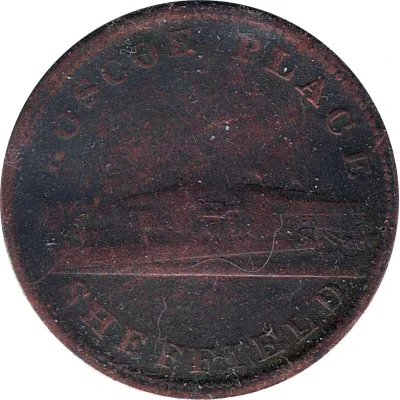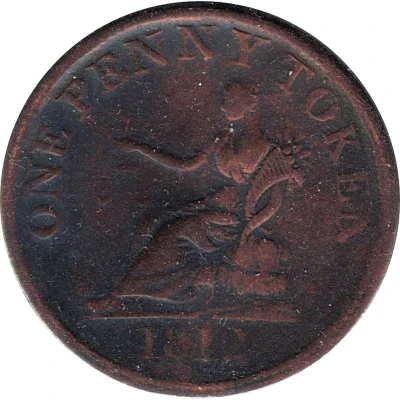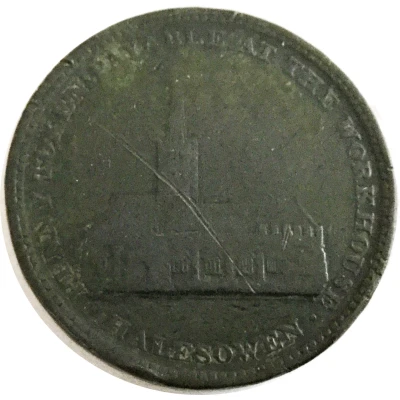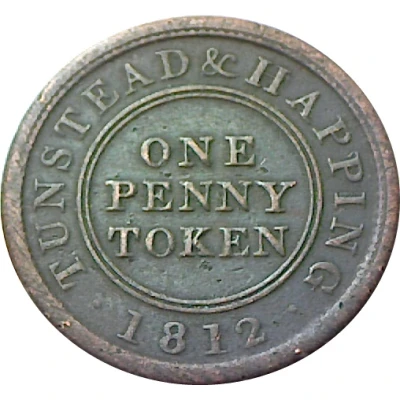
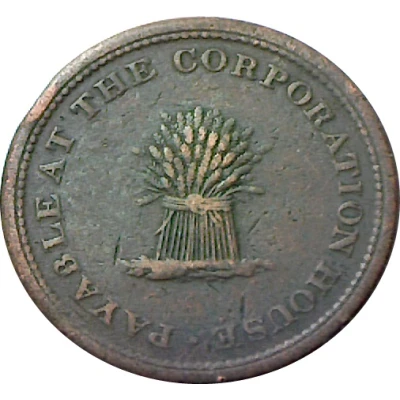

© ZacUK
1 Penny Norfolk - Smallburgh / Tunstead and Happing
1812 year| Copper | - | 35 mm |
| Issuer | United Kingdom (United Kingdom, British Overseas Territories and Crown Dependencies) |
|---|---|
| Type | Token |
| Year | 1812 |
| Value | 1 Penny (1⁄240) |
| Currency | Currency tokens (1798-1816) |
| Composition | Copper |
| Diameter | 35 mm |
| Thickness | 2.5 mm |
| Shape | Round |
| Technique | Milled |
| Orientation | Medal alignment ↑↑ |
| Demonetized | 1817 |
| Updated | 2024-10-09 |
| Numista | N#80776 |
|---|---|
| Rarity index | 87% |
Reverse
Central standing sheaf of wheat. Lettering around, beaded border
Script: Latin
Lettering: PAYABLE AT THE CORPORATION HOUSE ·
Edge
Central diagonal milling
Comment
Established in 1785, Tunstead and Happing was one of the Norfolk Hundred Incorporations formed by Local Acts of Parliament in the latter half of the eighteenth century. Its membership comprised all the parishes in the Tunstead and Happing Hundreds except for the parish of North Walsham. The Act For the better Relief and Employment of the Poor within the Hundreds of Tunstead and Happing, in the County of Norfolk (25 Geo.3. c.27.) established a board of guardians to administer poor relief including the operation of a "House of Industry" or workhouse. The Tunstead and Happing House of Industry was erected in 1785 at Smallburgh. It appears to have had a large H-shaped main building with a number of other smaller ancillary buildings. The Tunstead Incorporation was one of the workhouses to issue its own coinage in the form of workhouse tokens in the early 1800s when there was a national shortage of copper coins. The tokens could be spent locally to buy bread and other basic commodities. By 1924, the workhouse was closed and inmates were maintained at the Loddon and Clavering union workhouse at Heckingham. The main workhouse building has been demolished. The surviving structures at the east of the site have now been adapated for residential and agricultural use.Interesting fact
One interesting fact about the Token 1 Penny (Norfolk - Smallburgh / Tunstead and Happing) 1812 from United Kingdom is that it was issued during a time when there was a severe shortage of official currency in circulation, particularly in rural areas. As a result, many private tokens like this one were issued by local merchants and traders to fill the gap and facilitate trade. This coin, made of copper, features an image of a crown on one side and the name of the issuing authority, "Norfolk - Smallburgh / Tunstead and Happing," on the other. Despite its humble appearance, this coin played an important role in the local economy of the time and is now a sought-after collector's item.
